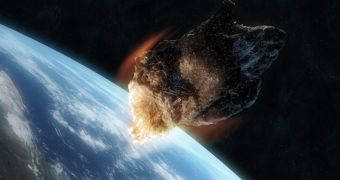Earlier this month, astronomers discovered a rather large asteroid, 2013 TV 135, which, from early observations, seems to have a chance of slamming into the Earth in 2032.
Initially, NASA put that chance at one in 63,000, rather good odds that we're going to avoid an apocalypse in a couple of decades.
But the latest calculations put the chance at just one in 10,000. That doesn't sound too encouraging. In fact, it looks like a bad thing. As more data is gathered, the chances of the asteroid hitting us increase.
But, as Bad Astronomer Phil Plait explains, that's not entirely the case. The changes are getting bigger, for now, but that's not an indication of any trend, but rather, the direct result of the way these changes are calculated.
We've only known about the asteroid for a few weeks. It's just 400 meters (1,300 feet) wide, which sounds like a lot, but it is minuscule compared to the size of our solar system.
So predicting where that small speck of dust will be 19 years from now is tough. Based on the data so far, all astronomers can do is predict that the asteroid will be within a large volume of space and that it will more likely be towards the center of that volume.
The early data generated a huge probability sphere, quite large compared to the Earth. So the Earth only occupied a very small portion of that sphere.
As new data comes in, the probability sphere shrinks, so the Earth, still inside that sphere, now takes up a much bigger portion of it. This is why the numbers are looking so grim.
But as predictions become more accurate, as more observations are made, the Earth will move outside of the sphere so the chances of the asteroid hitting us will drop dramatically. There's no guarantee that will happen, of course, but it is the most likely scenario.

 14 DAY TRIAL //
14 DAY TRIAL //